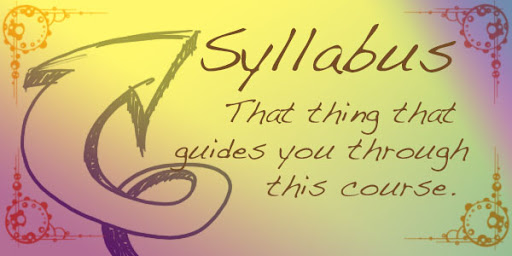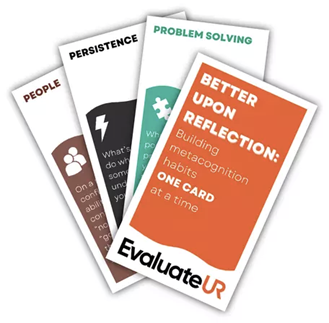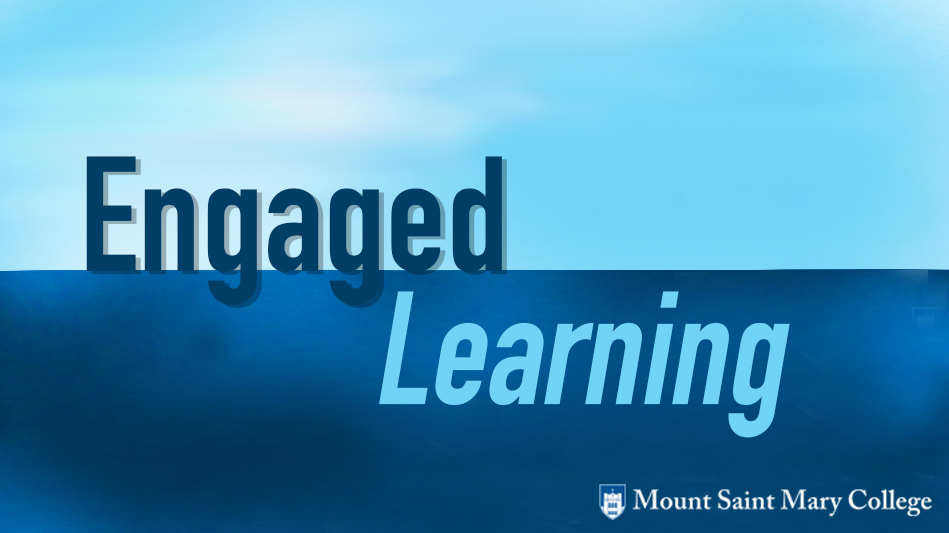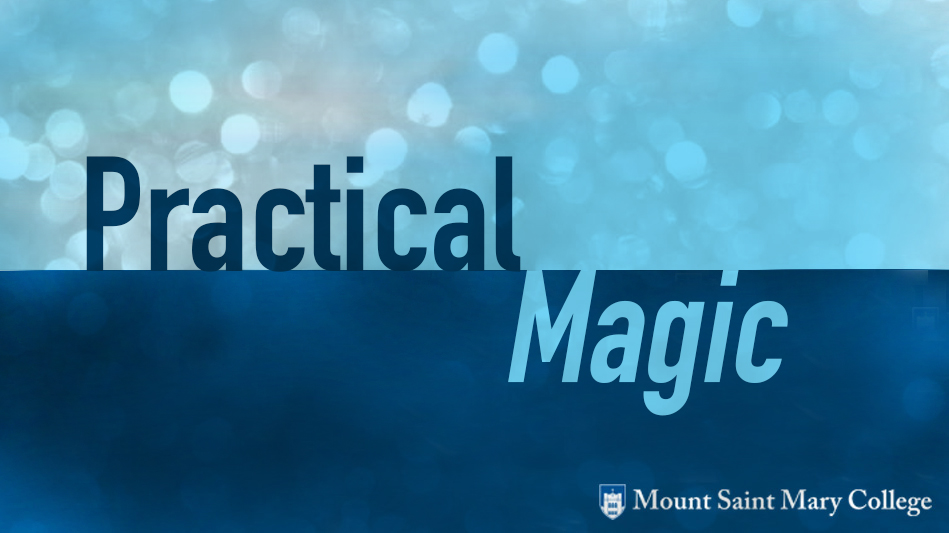by Gina Burkart, EdD, Learning Specialist, Clarke University
Once instructors understand the strengths and weaknesses of students, they can begin to adapt how they deliver the content of their course in ways that their students will be able to connect with it. This makes self-assessments valuable tools for learning and teaching (Burkart, 2020). Self-Assessments help professors note students’ strengths, weaknesses, and perceptions of self so that they can teach curriculum to the needs of the students. This allows professors to use metacognition in their own teaching, i.e. metacognitive instruction.
Mapping Out a Plan for Teaching and Learning
In my own courses, student assessments guide me in using a chart to map out a plan of how to address students’ needs while teaching the planned curriculum on the syllabus. This allows me to be mindful of my teaching and how it is connecting with students as the semester unfolds. The chart helps me note and monitor my students’ strengths and weaknesses, how these may impact course goals/outcomes and strategies that I will use to help my students adapt to the content demands of the course. See Figure 1 for an example chart.
Likewise, it is also helpful to guide students in using metacognition to create their own learning plans for the semester. Creating learning plans can be an effective activity for the first meeting of the class, while going through the course syllabus.
To facilitate this activity, a professor might hand out the syllabus, give students 5-10 minutes to read through the syllabus, and then have them share responses to the following questions in small groups to more strategically and critically read the syllabus and discuss it with classmates:
- What prior reading and writing experiences have shaped you as a learner?
- Based on this course syllabus, what challenges do you anticipate?
- What strategies and resources will you use to meet these challenges?
- What are your goals for this course?
- How can you connect the material of this course with your major?
- How can we as your learning community support you with your learning and goals? What do you need from us?
The small groups can then be invited to share their responses with the large group and write them on the board. Professors might then take a picture of the board and refer back to it later to use as an informal student assessment to inform teaching.
Finally, students return to small groups to create a more detailed and personalized plan of what they might do in order to find success and meet the outcomes of class. Professors might provide a template of a learning plan that would guide students in going through the syllabus and pulling out key information to create the plan. See Figure 2 for an example student learning plan.
Having these types of activities and discussions at the beginning of a course empowers students, as they realize that they are in charge of their learning. As Biggs and Tang (2011) have recognized, student engagement increases when students feel co-ownership and empowerment in the classroom.
Adaptation for Online Courses
This metacognitive activity can also be adapted in an online course through Voice Thread. Voice Thread allows students to create and upload an interactive, video recording of themselves. I have asked students to respond to the same questions in a 3-5-minute Voice Thread video and to also respond to a classmate’s Voice Thread. Additionally, after completing the Voice Threads, students were required to electronically submit a learning plan based on the syllabus for course credit. Similar to the in-class discussions in the face-to-face class, this activity fosters the metacognitive monitoring process that Flavell (1979) described. As students reflect on the skills necessary for the course outcomes, prior metacognitive knowledge and experiences resurface as goals are set and strategies for achieving the goals are identified and shared. Professors are then also able to monitor the needs of the students and provide feedback related to goals and strategies.
In both instances, students are able to share about their learning in a social setting, which reminds students they are not alone in their learning. This is important because students learn about their own learning and self by reflecting on the learning of others (Mead, 1962/1934; Burkart, 2010).
Assignments and Activities that Continue to Foster Metacognitive Growth throughout the Semester
Professors can continue to foster metacognition throughout the semester by integrating assignments and activities that reinforce reflection on learning, strategies, and goal setting. For example, professors might begin each class period with a 1-minute pre-write where students list main points from the assigned readings, questions they want to discuss in class, and why the material is relevant and important. I often have students do this on an index card, and I collect them and use the cards to guide my teaching during the class. While students are engaged in group work, I quickly go through the cards, award a check, plus, or minus with brief comments (to show I value metacognitive work) and incorporate these into class participation points. Questions that students wanted to discuss in class are then discussed. Sometimes, I pose the questions to the large group for discussion. Other times, I distribute the questions to small groups and assign them to formulate a response for the rest of the class.
Not only does using students’ questions in class show students that they are being listened to, it acknowledges that their questions are valued and their preparatory work outside of class is connected to learning inside the classroom. And, based on their questions and class discussion, I rethink strategies and interventions to help students better access the course materials. As Simmons (2017) noted, this type of participatory pedagogy makes students more aware of their own cognitive processes.
The following is a list of activities that I have used or recommended to faculty to foster student metacognition in the classroom (Burkart, 2019):
- 1-minute prewrite at the beginning of class
- Create or model note-taking and reading that facilitates learning
- Model thinking aloud with problem solving, reading, interpreting
- Incorporate learning checks
- Assign post-test or assignment analysis
- Encourage learning material on all levels of learning by assessing and modeling strategies scholars use: concept mapping, reading journals, study/note journals, portfolios
- Reward revision, rethinking, growth by awarding points to final products
- Use wrappers while teaching
- Encourage or arrange study groups
- Relate the material to students’ lives and experiences
- Create and assign course blogs with prompts that encourage reflection and discussion on goals, use of strategies, and challenges and growth with learning course material
- Create group tests/assessments
While monitoring students’ needs and growth throughout the semester, professors can use this list to use metacognition in their own teaching—establish goals and integrate strategies to impact student learning. In turn, this will guide students in reflecting on their learning and increase engagement. Most importantly it provides practice in metacognition that empowers students to take control of their own learning that will carry over into other classes and their personal lives outside of the classroom.
References
Biggs, J. B., & Tang, C. (2011). Teaching for quality learning at the university: What the student does. Maidenhead, UK: Society for Research into Higher Education & Open University Press.
Burkart, G. (2019). Engaging the unengaged in the college classroom. Faculty workshop—by request, Clarke University, Dubuque, IA.
Burkart, G. (2010, Dec). First-Year College Student Beliefs about Writing Embedded in Online Discourse: An Analysis and Its Implications to Literacy Learning. (Unpublished doctoral dissertation). University of Northern Iowa, Cedar Falls, IA.
Burkart, G. (2010, May). An analysis of online discourse and its application to literacy learning, The Journal of Literacy and Learning. Retrieved from http://www.literacyandtechnology.org/uploads/1/3/6/8/136889/jlt_v11_1.pdf#page=64
Mead, G. H. (1934). Mind, self, and society: From the standpoint of a social behaviorist. Chicago: University of Chicago Press.
Simmons, N. (2017). Participatory Pedagogy: Inviting Student Metacognition. Retrieved from https://www.improvewithmetacognition.com/developing_student_metacognition_simmons/




